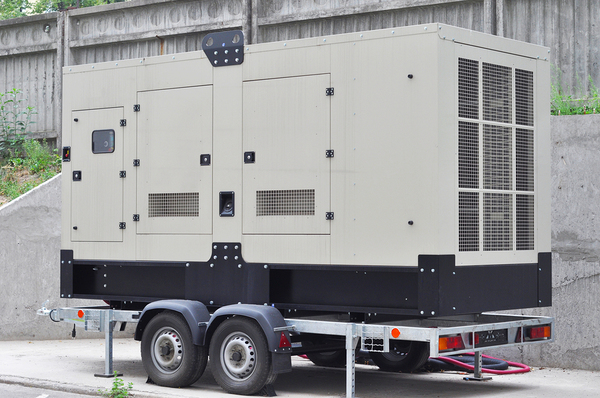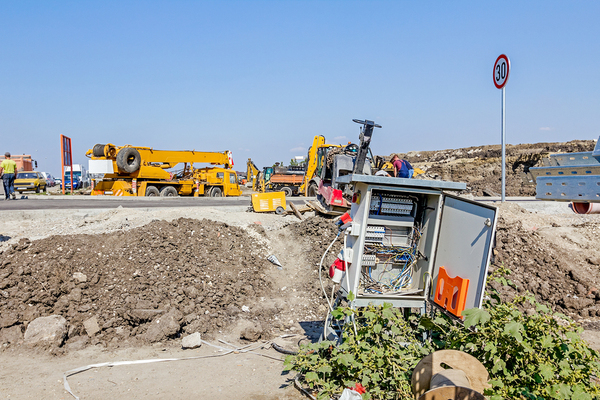It’s understandable for construction supervisors to be eager to break ground on a new project. But before the temporary lights come on and the power tools start whirring, there has to be adequate electricity available for the work to proceed. This can present a challenge, especially if the job site sits far away from existing power sources.
There are two basic approaches to securing portable power for a construction project: by linking existing utility power to the site, or by using generators at the site.
Connecting to a Nearby Power Source
If the site is located adjacent or relatively close to a power source, then electricity can be routed to the site via conduit or insulated commercial cables. In many cases, this approach may require the construction of transformers, distribution panels, and/or temporary high-voltage substations. These units are connected by feeder conduits and temporary wiring.
Bringing In Electric Generators
The other option involves the use of portable generators placed strategically around the job site. Power cords and Camlock cables run outward from the generators to distribution panels with branch breakers. Electrical cords and spider boxes are then connected to the panels and strung to where power is needed.

A portable generator is one option to get portable power to your job site.
Planning is the Key
Arguably the most critical step in supplying portable power to a job site is the planning stage. And there’s more to it than simply laying cables to and from a power source or spacing generators evenly around the job site.
To start, it’s imperative that construction supervisors have a strong sense of which activities will be taking place at each spot on a site. This knowledge may necessitate positioning more power outlets in one location than another. Of course, this means allocating suitable electrical capacity to these high-use areas.
In addition to structuring power distribution for the site’s job conditions, any power configuration must also remain in compliance with all applicable codes. So it’s vital to communicate with a licensed electrician to determine how your electricity goals can be met while remaining compliant with the law.
It’s also wise to overestimate the amount of power that you will need on a construction site. That way if a client makes a last-minute change or if unforeseen circumstances occur, you won’t have to reroute cables, move generators, or scramble to rent extra equipment to increase your electrical capacity.
Keep Building Codes in Mind
A major challenge in using a portable power supply is avoiding situations which would trigger OSHA violations. Since some of the most commonly-cited construction violations involve electrical requirements, being familiar with OSHA standard 1910.303 – Electrical, General Requirements as well as OSHA 1926 Subpart K, Electrical is extremely important to remain OSHA-compliant.

Safety and adhering to building codes are primary concerns when planning for power.
Construction supervisors should primarily be on the lookout for violations like:
- Improperly-rated wiring for an application
- Uncovered openings in panels and enclosures
- Daisy-chaining extension cords together for runs exceeding 100 feet
- Extension cords lying near standing or flowing water
- Extension cords that are spliced, taped, or improperly connected at their terminals
- Light lamps that are unprotected by cages, lens covers, or other appropriate protection
Neglecting to properly power your construction site can possibly result in thousands of dollars in fines and penalties, not to mention exposing workers to debilitating or fatal electrical shocks. Therefore, construction supervisors must take the time to create a power plan, anticipate contingencies, and prioritize safety when distributing electricity throughout their construction site.
Need to brush up on OSHA electrical standards? Take our Construction Supervisor License classes for free.
